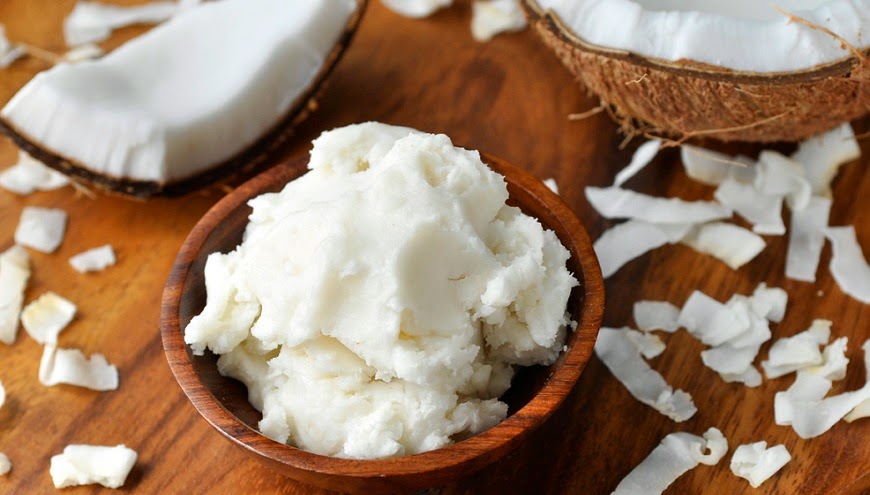The cocoa butter is a healthy product that you can incorporate into your recipes and give it all a natural coconut flavor of the other ingredients. This is a very rich food in addition to providing great benefits, among which the fibers, fats, proteins, minerals and vitamins of the coconut can be highlighted, which remain intact in the butter, making it a very complete food. Below you can learn how to make this easy recipe to get a healthy coconut butter, to add to your meals and fill them with its aroma and flavor.

What is coconut butter?
Coconut butter is all the dried pulp of the coconut. You are probably familiar with dried coconut flakes. Butter is simply taking these flakes and grinding them into a fine silky smooth butter. Coconut butter contains the natural oils from coconut oil, as well as the fiber from the meat. And it gives you the best of both worlds when it comes to total nutrition.
Nutritional benefits of coconut butter
The nutritional benefits of coconut butter are similar to those of coconut oil and as we’ve already mentioned, coconut butter is made from the whole coconut, so it also contains saturated fat, around 10 grams per tablespoon. It has nutrients that coconut oil does not have, most notably fiber. A tablespoon of coconut butter has about 2 grams of dietary fiber. On top of all that, coconut butter is:
- Antivirus.
- Antibacterial.
- Good for keeping hormones healthy and balanced.
- Substitute for regular butter in many recipes.
- Completely vegetarian friendly.
Other nutrients in coconut butter are:
- Protein.
- Potassium.
- Magnesium.
- Iron.
- High fiber content.
- Contains healthy fats for long-term energy.
What can coconut butter be used for?
Coconut butter is delicious and can be used in just about anything. It is perfect for making sweets and can be substituted for cow butter and / or oil. Add a strong and sweet coconut flavor to your recipes. It’s tasty as a butter substitute on your morning toast or bagel, but it’s also delicious in the following dishes:
- In smoothies.
- In vegan cakes or pastries.
- In baby food.
- About fresh fruit or frozen yogurt.
- Putting some in the oatmeal atole for breakfast.
- Adding it to a piña colada.
- Giving an exquisite flavor to hot chocolate or coffee.
Coconut butter burns easily and is not the best option for cooking on the stove, just very low heat for a short period of time.
How to make coconut butter?
Coconut butter is simply coconut flakes mixed into a buttery consistency. Use unsweetened coconut flakes, and you can always add a little honey or stevia to taste. You will need a food processor, a blender that can grind very well is perfect.
Ingredients:
- 2 cups unsweetened coconut flakes.
- 2 tablespoons coconut oil * use as needed.
Instructions:
* 16 oz coconut flakes = 10 oz coconut butter.
- Measure out 2 cups of coconut flakes.
- Grind the coconut flakes in your blender or food processor. It will look mushy for several minutes.
- After about 5-10 minutes the flakes should start to look softer, keep the blade running until the coconut butter has NO chunks. This is the time to add the coconut oil to soften.
- Turn off your blender or processor several times to let it cool. Scrape down the sides while it’s cooling.
- After about 10-20 minutes, your coconut butter is almost done. It will be liquid, so it is poured into a jar at this time. After a while, it will come to room temperature and solidify again.
- To soften, place the glass jar in a pot of hot water, until it becomes liquid. Do not cook it, just heat it a little in a water bath.
Note:
If the coconut flakes are very dry it may take 10-20 minutes to transform the flakes into coconut butter. Be patient. Most of the time you can add 2 tablespoons of coconut oil to help throughout the process.
